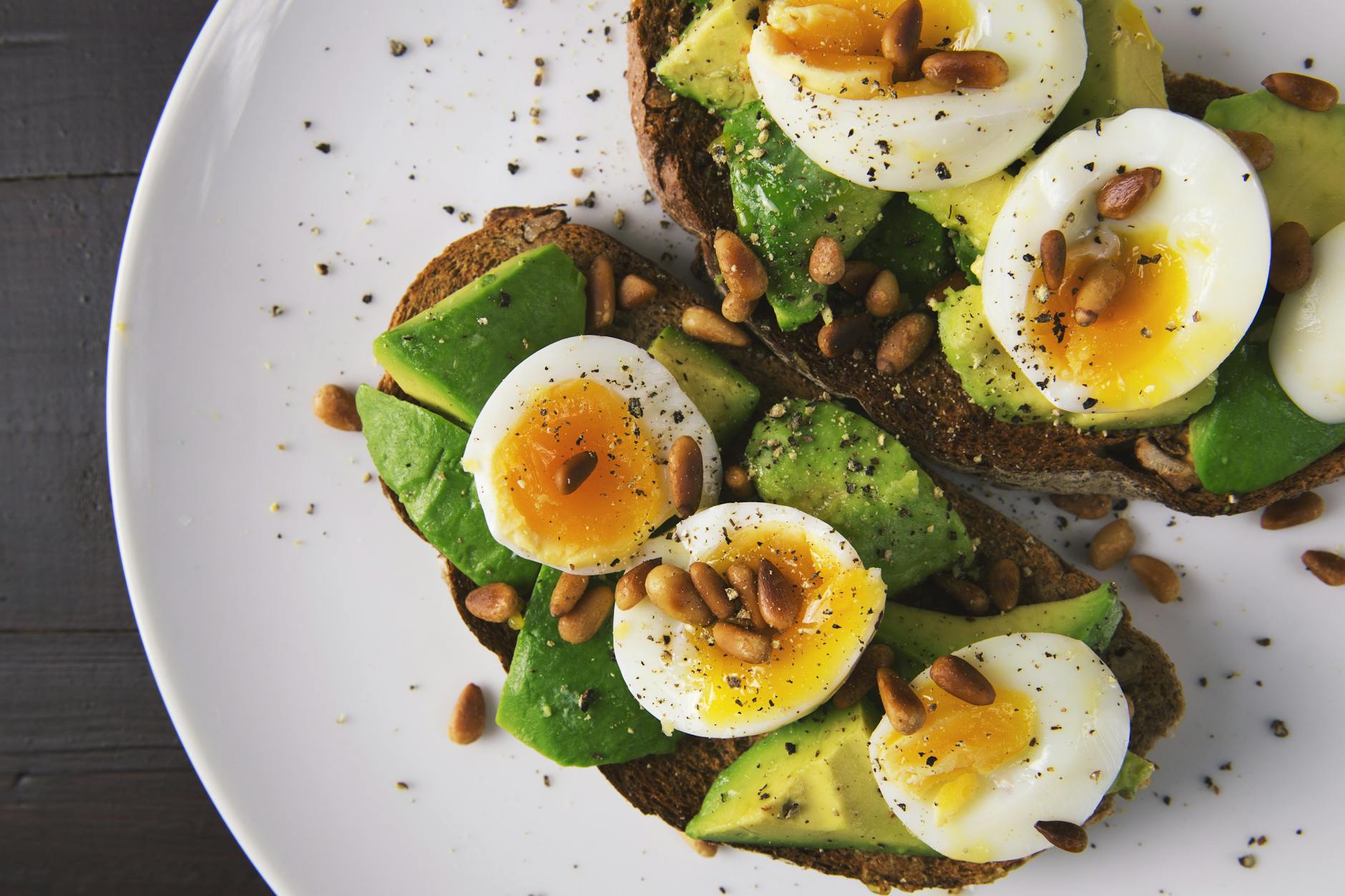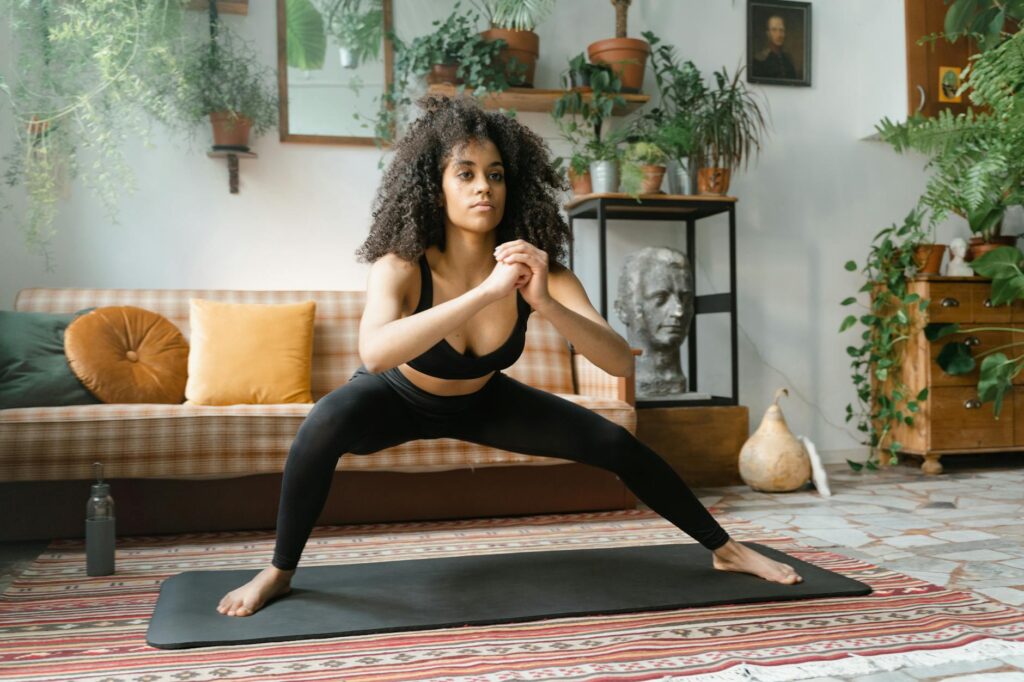Ever spent money on gym memberships you never use because, let’s face it, getting there is half the battle? You’re not alone. 68% of home fitness enthusiasts say convenience is why they never go back to traditional gyms. That’s why many are turning to the Best Leg Workouts at Home to stay fit without the hassle.
Here’s the truth: building impressive leg strength doesn’t require fancy equipment or membership fees. The best leg workouts at home deliver results that rival any gym routine.
I’ve spent years testing what actually works when you’re limited to your living room. No fluff, no unnecessary moves – just the exercises that transform legs with minimal space and equipment.
But here’s where most people go wrong with home leg training, and it’s probably not what you think…
Essential Equipment for Best Leg Workouts at Home

A. Bodyweight-Only Options
Who says you need fancy equipment for killer leg gains? Your body weight is enough to torch those quads, hamstrings, and calves. Start with classic squats – they’re the foundation of any good leg workout. Mix in lunges (forward, reverse, or side) to hit different muscle angles.
Calf raises on your stairs? Free and effective. Wall sits? They’ll have your quads screaming in minutes. For hamstring focus, try glute bridges or single-leg deadlifts using just your bodyweight.
The best part? No setup time. No storage problems. No excuses.
B. Basic Equipment Under $50
Ready to level up without breaking the bank? A resistance band set ($15-25) instantly transforms those bodyweight leg exercises into something much more challenging.
A jump rope ($10) isn’t just for cardio – it’s secretly one of the best calf builders around. Add ankle weights ($20-30) to intensify your leg raises and kickbacks.
For under $50 total, this simple setup delivers gym-quality results right in your living room.
C. Space-Saving Alternatives
Living in a shoebox apartment? No problem. Sliding discs (or paper plates on carpet) take up zero space but create muscle-burning friction during lunges and hamstring curls.
Door anchor resistance bands eliminate the need for bulky equipment. A folding step platform stores under your couch but creates elevation for step-ups and deficit movements.
Smart space-savers let you train legs effectively in even the tiniest apartments.
D. Digital Apps and Tracking Tools
Your phone might be your best workout partner. Free apps like Strong or JeFit help track your leg workout progress without the messy notebook.
YouTube channels offer guided leg routines that adapt to your available equipment. For about $10/month, premium fitness apps provide structured leg programs with progression built in.
The most valuable digital tool? A simple timer app for those brutal HIIT leg intervals.
Bodyweight Leg Exercises for Beginners

A. Proper Squat Form for Maximum Results
Squats are the king of leg exercises for a reason. But doing them wrong? That’s just asking for knee pain and zero results.
Start with your feet shoulder-width apart, toes slightly turned out. Now the crucial part – when you lower down, push your butt back like you’re sitting in a chair that’s too far behind you. Keep your chest up and your spine neutral – no rounding that back!
Your knees should track over your toes, not cave inward. And depth matters – aim to get your thighs at least parallel to the ground. Going deeper? Even better for those glutes.
B. Effective Lunge Variations
Basic lunges are great, but mix these variations into your home leg workouts and watch those legs transform:
- Static lunges: One foot forward, one back, and just lower straight down. Perfect for beginners.
- Walking lunges: Adds movement and challenges your balance. Do these across your living room.
- Reverse lunges: Step backward instead of forward. Easier on the knees but still brutal on quads.
- Pulse lunges: Hold the bottom position and give me 10 tiny pulses. You’ll feel the burn fast.
C. Calf Raises for Defined Lower Legs
Calves are stubborn. They need consistent work and proper form.
Basic standing calf raises work wonders – just rise up on your tiptoes, hold for 2 seconds at the top, then lower slowly. Do these on the edge of a stair for extra range of motion.
For variety, try these foot positions:
- Toes forward (hits the main calf muscle)
- Toes pointing out (works the inner calf)
- Toes pointing in (targets the outer calf)
Do 3 sets of 15-20 reps. Calves respond to higher rep ranges, so don’t go light here!
Advanced Home Leg Routines

High-Intensity Interval Training (HIIT) for Legs
Think your home workouts can’t torch your legs like the gym? Think again. HIIT is the secret weapon for building serious leg strength with zero equipment.
The magic lies in the intensity. 40 seconds of work, 20 seconds of rest. That’s it. Try this killer circuit:
- Jump squats
- Alternating lunges
- Mountain climbers
- Speed skaters
- Squat pulses
Do each move back-to-back, rest 60 seconds between rounds, and repeat 4 times. Your legs will be on fire, but that’s exactly what we want.
Plyometric Exercises for Power
Want explosive leg power? Plyometrics will transform your lower body fast.
These moves build fast-twitch muscle fibers that regular exercises miss:
- Box jumps (use a sturdy chair)
- Tuck jumps
- Split jumps
- Burpees
- Lateral bounds
The key? Quality over quantity. 8-10 reps with perfect form beats 20 sloppy ones every time.
Isometric Holds for Strength
Isometrics are the unsung heroes of home leg training. You’re not moving, but your muscles are working overtime.
Try these brutal holds:
- Wall sits (aim for 60+ seconds)
- Static lunges (30 seconds per leg)
- Single-leg wall sits
- Sumo squat holds
- Glute bridges with a 3-second squeeze
These moves create microscopic tears in muscle fibers, forcing growth when you recover.
Single-Leg Movements for Balance
Most people have one leg stronger than the other. Single-leg work fixes this imbalance while building serious strength.
Master these moves:
- Pistol squats
- Bulgarian split squats
- Single-leg deadlifts
- Skater squats
- Step-ups
Start with bodyweight, then add household items for resistance once you’ve nailed the form.
Time Under Tension Techniques
Want to make any leg exercise twice as effective? Slow. It. Down.
Add these techniques to basic movements:
- 4-second lowering phase on squats
- Pause at the bottom of lunges
- 1-and-¼ reps on glute bridges
- Pulse at the hardest point
- Eliminate rest between reps
This approach maximizes muscle fiber recruitment without adding a single pound of weight.
Targeted Workouts for Specific Leg Muscles

A. Quadriceps-Focused Exercises
Quads are the powerhouses of your legs, and you don’t need fancy equipment to make them burn. Start with bodyweight squats – feet shoulder-width apart, dropping your butt back like you’re sitting in an invisible chair. Aim for 3 sets of 15-20 reps.
Then move to reverse lunges. They’re kinder on your knees than forward lunges but still blast those quads. Step back, lower until both knees form 90-degree angles, and push through your front heel to stand. Try 12-15 per leg.
Wall sits are brutal but effective. Back against the wall, slide down until your thighs are parallel to the floor. Hold for 30-60 seconds and feel that quad burn intensify.
B. Hamstring Builders Without Equipment
Your hamstrings often get neglected, which is a shame. Good mornings are perfect for home hamstring work – stand with feet hip-width apart, hands behind your head, bend forward at the hips while keeping your back straight. Feel that stretch? That’s the sweet spot.
Glute bridges hit your hamstrings too. Lie on your back, feet flat on the floor near your butt, and lift your hips toward the ceiling. For more intensity, try single-leg bridges – same movement but with one leg extended.
C. Glute Activation and Strengthening
Those glutes need love! Fire them up with donkey kicks – on all fours, kick one leg back and up while keeping your knee bent. Squeeze at the top like you’re pressing your foot against the ceiling.
Clamshells target both glutes and outer thighs. Lie on your side, knees bent at 45 degrees, feet together, then open your top knee while keeping feet touching.
For maximum glute gains, try hip thrusts. Back against a couch or bench, feet flat on the floor, drive your hips up, squeeze those cheeks at the top.
D. Inner and Outer Thigh Sculptors
Inner thighs often need extra attention. Sumo squats are perfect – wide stance, toes pointed out, dropping low while keeping your back straight.
Side-lying leg raises hit those outer thighs hard. Lie on your side, bottom leg slightly bent for stability, top leg straight, and lift it toward the ceiling.
Plié squats work both areas – stand with feet wider than shoulders, toes turned out, then bend knees directly over toes and lower into a deep squat.
Mix these moves into your at-home leg day routine 2-3 times weekly for noticeable results.
Creating an Effective Leg Workout Schedule

A. Weekly Routine Planning
Ever notice how your legs feel when you skip workouts for a week? Not great. That’s why consistency is key.
For beginners, start with 2-3 leg days per week with at least 48 hours between sessions. Your muscles need that recovery time! A simple structure could be:
- Monday: Lower body focus
- Wednesday: Upper body or rest
- Friday: Lower body again, different exercises
- Weekend: Active recovery (walking, light stretching)
Don’t overthink it. The best leg workout schedule is one you’ll actually stick to.
B. Progressive Overload Strategies
Your legs are smart—they adapt quickly. That’s why doing the same 10 squats forever won’t cut it.
Try these no-equipment progression techniques:
- Add 2-3 reps each week
- Slow down the tempo (3 seconds down, hold, 1 second up)
- Decrease rest periods gradually
- Add pulses at the bottom of movements
- Increase range of motion
Remember: if it doesn’t challenge you, it won’t change you. But don’t jump from 10 to 30 squats overnight. Small, consistent increases work best for at-home leg workouts.
C. Recovery Techniques Between Workouts
Skipping recovery is like building a house with only half the materials. It just doesn’t work.
Between your home leg workouts:
- Foam roll your quads, hamstrings and calves for 5-10 minutes
- Stay hydrated (your muscles are mostly water!)
- Get 7-8 hours of sleep when possible
- Try light walking on rest days to reduce soreness
- Stretch before bed to improve circulation
Pain versus soreness? Normal soreness fades in 24-72 hours. Sharp pain that limits movement needs attention.
D. Combining Leg Days with Other Training
Balance matters. Going all-in on legs while neglecting everything else creates imbalances.
A balanced weekly approach:
- Monday: Legs + core
- Tuesday: Upper body or rest
- Wednesday: Cardio or active recovery
- Thursday: Legs (different exercises)
- Friday: Upper body focus
- Weekend: One rest day, one active recovery day
This schedule gives you two solid leg days while still developing total-body strength. For maximum results, fuel your workouts with protein-rich foods and plenty of veggies.
Nutrition Tips for Leg Development

Protein Requirements for Muscle Growth
Your legs won’t grow on wishes and air squats alone. You need protein—and lots of it.
Most fitness enthusiasts fall short on protein intake when doing home leg workouts. The truth? Your quads, hamstrings, and calves are some of the largest muscle groups in your body. They need proper fuel to recover and grow.
Aim for 1.6-2.2g of protein per kg of bodyweight daily. For someone weighing 70kg, that’s about 112-154g of protein spread throughout the day. Not just after workouts.
Great sources include:
- Chicken breast (31g per 100g)
- Greek yogurt (10g per 100g)
- Lentils (9g per 100g)
- Eggs (6g per egg)
Carbohydrate Timing for Energy
Those brutal bodyweight leg exercises? They burn through glycogen like nothing else.
Carbs aren’t the enemy when you’re trying to build strong legs at home. They’re your best friend.
About 2-3 hours before your at-home leg day routine, consume 40-60g of carbs. This fills your muscle glycogen stores, giving you the energy to push through those last few brutal reps.
Post-workout, grab another 40-60g within 30 minutes. This replenishes what you’ve burned and kickstarts recovery.
Hydration Strategies for Recovery
Cramping during your calf exercises at home? You’re probably dehydrated.
Water isn’t just about quenching thirst—it’s critical for nutrient transport to your leg muscles and waste removal.
Drink 500ml of water about an hour before your home leg workout. During your session, sip 250ml every 20 minutes. Afterward, weigh yourself and drink 1.5L for every kg lost.
Add a pinch of salt to your water when doing intense home quad exercises—it helps prevent those nasty cramps that can derail your progress.

Transforming your legs doesn’t require an expensive gym membership or fancy equipment. With the exercises and routines outlined in this guide, you can build strong, defined legs right in your living room. Whether you’re a beginner starting with bodyweight squats and lunges or ready for advanced plyometric movements, consistency is key to seeing results. Remember to create a balanced schedule that targets all leg muscles while allowing proper recovery time.
Your leg development journey extends beyond exercise alone. Support your hard work with proper nutrition, ensuring adequate protein intake and overall calorie balance based on your goals. Start implementing these home leg workouts today, and you’ll be amazed at how much stronger and more powerful your lower body can become with dedication and the right approach. Your dream legs are achievable—right at home.
Also Read: Top 10 Benefits of Morning Exercise


